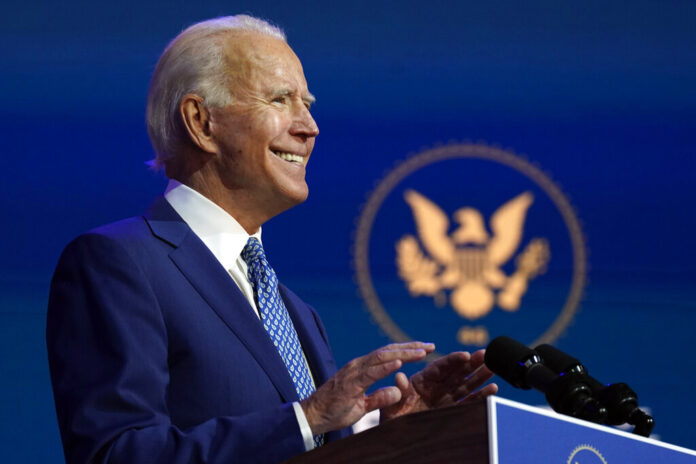Like much of Joe Biden’s presidency to date, the $2.3 trillion infrastructure plan he laid out last week is remarkably ambitious. Rightly so. America’s economic future is at stake.
The country needs a bold new commitment to public investment. The U.S.
is visibly falling behind. Any recent traveler to Beijing or Shanghai is struck by how shabby American airports and city grids look in comparison. And this isn’t just about appearances. China is proving that modern infrastructure is an essential component of industrial competitiveness and economic growth. Unless something changes, Washington’s neglect of roads, bridges and other connective tissue, plus failure to invest in the infrastructure of the future — from digital access to clean power grids — will condemn the U.S. to relative economic decline.
The proposal takes many steps in the right direction. It offers more than $600 billion for transportation; doubles funding for mass transit; and devotes big bucks to strengthening the electric grid, boosting green energy, expanding access to highspeed internet, and other worthy initiatives.
It includes a lot of smart ideas, such as a competitive grant program to reward areas that eliminate exclusionary zoning policies, a bold expansion of R& D investment, and funding for electric-car charging stations.
A particular strength is the plan’s bold proposals for decarbonizing the economy. It aims for carbon-free electricity by 2035, offers tax credits for clean energy generation and storage, invests in carbon capture and sequestration technologies, adds significant new funds for climate research, and much else. In addition to reducing emissions, this push should boost growth, create jobs and help level the playing field with fossil fuels.
All this is good. But the plan is by no means flawless.
It does too little to address America’s enormous backlog of humdrum repairs. By one estimate, the total cost of deferred maintenance nationally — on crucial things like highways, waterworks and bridges — may exceed $1 trillion. Yet the plan’s funding for such upkeep is dwarfed by huge new outlays on elder care (at $400 billion) and manufacturing support ($580 billion).
The plan falls short on financial discipline in other ways too. Many aspects of the proposal — such as its commitment to Davis-Bacon rules on wages paid to government contractors and “Buy America” provisions limiting use of imports — raise costs, and do so deliberately. It’s essential to ensure that the investments Biden favors are made as efficiently as possible and don’t divert resources from needed repairs, compounding the deferred maintenance problem. The administration should also review federal laws that can delay and complicate the construction of new infrastructure by exposing projects to redundant layers of litigation and scrutiny.
Biden’s vow to “unify and mobilize the country” behind a plan to restore America’s infrastructure is surely the right sentiment — not just to heal the country’s divisions but also to get this essential work done right. As the debate on the components of this proposal moves forward, he should try harder to keep that promise.





